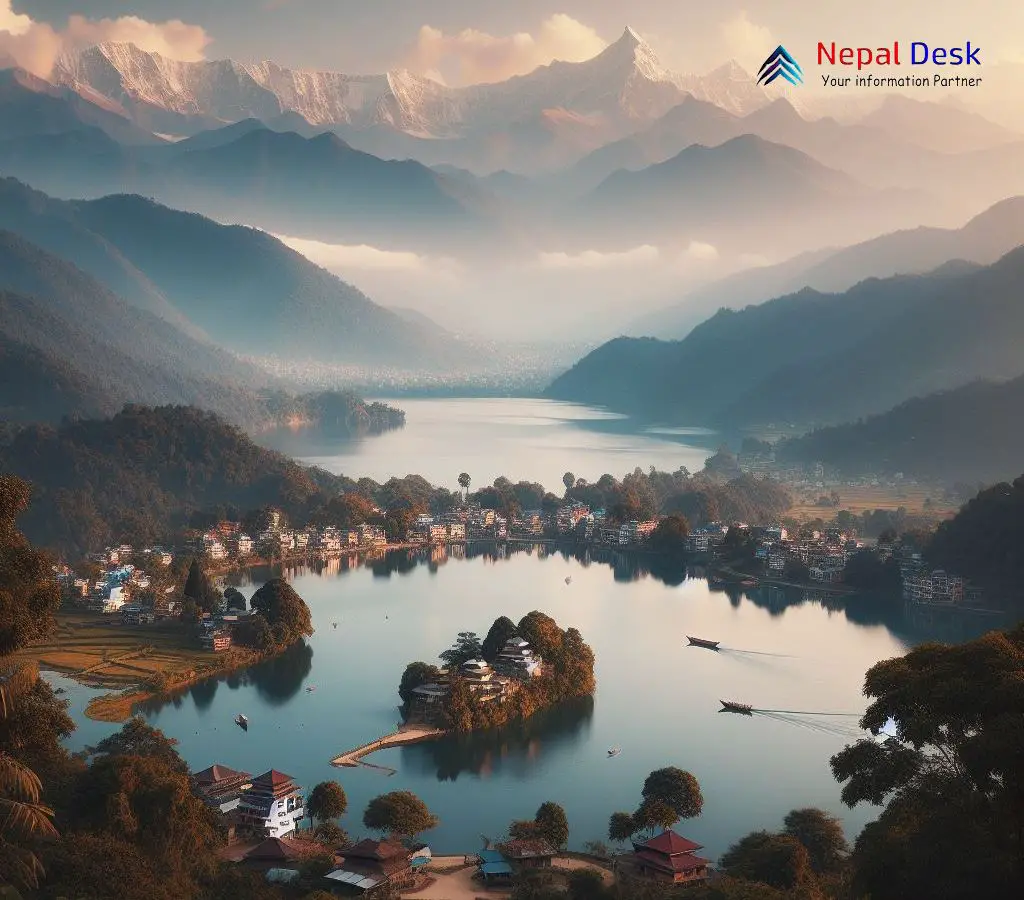Pokhara, A Gateway to Adventure, Designated Nepal's Tourism Capital
Published Date

Published Date
Discover Pokhara's official designation as Nepal's top tourist spot, its rich cultural heritage, breathtaking natural beauty, and adventure offerings.
⏱ 4 min read
In a recent turn of events, the Nepalese government has officially designated the scenic city of Pokhara in the Gandaki province as the nation's top destination for tourists. This momentous announcement was made at a special gathering at Barahi Ghat, which graces the peaceful shores of Phewa Lake.
While Pokhara has long been celebrated for its touristic draw, this formal acknowledgment as the tourism capital comes after having fulfilled specific benchmarks. This noteworthy milestone substantiates Pokhara’s prominent position as a focal point of tourism activity.
Dhanraj Acharya, the Mayor of Pokhara, emphasized that this formal proclamation significantly boosts Pokhara’s international standing. The declaration not only validates its current allure but also paves the path for heightened development and promotion of its distinctive attractions to an international audience. Additionally, a new policy commencing Sunday will commercially enliven night-time in Pokhara, granting businesses such as clubs and live music spots unrestricted night operation hours to expand nightlife offerings.
The Chief Minister of Gandaki Province, Surendra Raj Pandey, has stated that several business entities including bars, eateries, spas, grocers, and snack counters located in prime areas like Lakeside and Chipledhunga are now authorized to remain open until 1 a.m., provided they adhere to regulatory standards.
With its rich cultural tapestry and natural splendor, interspersed with leisure pursuits for tourists, Pokhara is celebrated as one of Nepal's gems. Cradled by the magnificent Annapurna range and offering stunning views over tranquil Phewa Lake, it is no surprise that visitors flock from all parts of the world to this city. Not only is Pokhara the starting point for famed treks such as the Annapurna Circuit and the journey to Annapurna Base Camp, but it also thrives culturally with various galleries and cultural centers that reflect the area's historical saga.
Pokhara emerges as a haven for those with a thirst for adventure and a penchant for serenity, drawing thrill-seekers to its array of paragliding, zip-lining, and white-water rafting adventures, while simultaneously offering a peaceful refuge at its lakefront resorts and meditation havens. This city's exquisite tapestry of nature's artistry, adrenaline-pumping exploits, and cultural treasures makes it an essential stop for those journeying through Nepal.
The recent anointment of Pokhara as the tourism epicenter is not just an accolade but the culmination of persistent endeavors to carve its niche in the international travel sphere. Yet the challenge persists; bestowing the title of tourism capital does not instantly usher in its prosperous realization. It necessitates concerted efforts, with crucial investments in infrastructure that welcome globetrotters and ensure that the newly inaugurated Pokhara Regional International Airport is running at full steam.
The true charm of Pokhara may lie in its enchanting environs, yet the current scarcity of first-rate amenities casts a shadow over visitor experiences. Upgrades are vital - from smoothing out connectivity channels to expanding lodging options - to ensure that Pokhara is poised to cater to the expected surge in foot traffic following its proclamation. Enhanced routes, seamless operation of international air travel facilities, and a variety of accommodations are areas ripe for action among local authorities and stakeholders.
The crafting of an array of new attractions in the vicinity of Pokhara is also pivotal for leveraging its tourism capabilities responsibly. The tenets of sustainable travel - economic vitality intertwined with environmental mindfulness and societal fairness - are the cornerstone to unlocking the city’s enduring success. Beyond the magnetic allure of landmarks like Phewa Lake and Sarangkot, diversity in attractions could extend visitor stays and boost gratification levels. Moreover, promoting eco-tourism ventures can even out the spread of tourists and aid in safeguarding Nepal's natural splendors.
Ultimately, gauging the effectiveness of Pokhara's designation as a tourism hub hinges on real strides in local amenities development, attraction diversification, and adherence to eco-conscious travel principles. It’s these practical steps by all entities involved that we eagerly anticipate witnessing.
